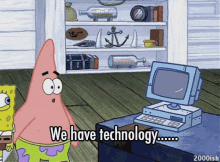Contextual Review
Lev Manovich (2001). “The Language of New Media”, p.216, MIT Press
In my contextual review, I will include notes and images that will help me prepare for my final essay. In this module, we first started looking at Lev Manochich theories about 'The language of new media'.
"Narratology, the branch of modern literacy theory devoted to the theory of narrative, distinguishes between narration and description. Narration is those parts of the narrative that move the plot forward; description is those parts that do not."
(Lev Manovich,2001)
This quote is explaining that We can consider a narrative to be a chain of events linked by cause and effect and occurring in time and space. This is what I believe Lev Manovich is trying to convey in this quote.
Lev Manovich (2001). “The Language of New Media”, p.216, MIT Press
There are many examples of different narratives that can create a chain of events, for example, Linear narrative, parallel narratives, branching narratives and etc. There are many art/media works that incorporate these methods for example games like 'Detroit become human' which is an interactive game where you can control the story this create multiple of narratives throughout the game turning into a branching narrative making the game more intriguing to the audience has can have multiple outcomes.
Other theories I have looked in this module is Jussi Parrika
when he describes about how media can never be dead and create new convergent media
Hertz, G. and Parikka, J., 2012. Zombie media: Circuit bending media archaeology into an art method. Leonardo, 45(5), pp.424-430.
“dead media were actually zombie-media: living dead’s, that found an afterlife in new contexts, new hands, new screens and machines”
(Parikka, 2012).
This quote expresses that media that you find old can always be remixed to create new adaptations of new media. That no media whatsoever can be truly dead as these media can be historicised and collected. Examples of these are circuit bending is using battery-powered objects and modifying them into DIY instruments and generators.
Hertz, G. and Parikka, J., 2012. Zombie media: Circuit bending media archaeology into an art method. Leonardo, 45(5), pp.424-430.
In the module we looked at disobedient electronics which are electronics that don't follow the typical conventions of an electronics and is indeed created to help support controversial topics in the world.
Hertz, G., 2017. Disobedient Electronics: Protest. Studio for Critical Making, pp.1.
"creation of experimental electronic objects - is a useful tool to communicate complex issues, like the wage gap between women and men, homophobia, racism, surveillance and privacy, rights, economic disparity, climate change or other topics."
(Hertz,2017)
This quote conveys the purpose of disobedient electronics is to educate people on real-world topics such as wage gap, racism and etc. Hertz is emphasising that disobedient electronics aren't afraid to break typical conventions and cause controversy in creating a much better world.
Examples of disobedient electronics are NSAF Hyphen Labs which are NeuroSpeculative AfroFeminism (NSAF) is an award-winning three-part digital narrative that sits at the intersection product design, virtual reality, and neuroscience. Inspired by the lack of multidimensional representations of black women in technology. Examples of there products are Sunscreen leaves a transparent layer rather than white cream, hair extensions and earrings which upload to the cloud to listen to police brutality.
On the icon above the text box, there should be PowerPoint link 'pptx' going in-depth about disobedient electronics.
Lev Manovich (2001). “The Language of New Media”, p.27, MIT Press
Also in this module, we looked at five principles of Lev Manovich "The language of New Media".
Which are Numerical Representation, Modularity, Automation, Variability, transcoding.
Lev Manovich explains in his book how media has changed more dramatically even than a computer, These principles show the difference between old media and new media. This quote explains the point I'm trying to prove from Lev Manovich book.
"Not every new object obeys these principals. They should be considered nor as absolute laws but rather as general tendencies of a cultural undergoing computerization. As computerization affects deeper and deeper layers of culture, these tendencies will increasingly manifest themselves."
(Lev Manovich,2001)
This quote presents that these principals will be temporary laws for now however Manovich emphasises that eventually media will change again due to cultural/technologies changes and that media and technology is always evolving.
Lev Manovich (2001). “The Language of New Media”, p.27, MIT Press

Renault, G., 1980. Science Fiction as Cognitive Estrangement: Darko Suvin and the Marxist Critique of Mass Culture. Discourse, 2, pp.113-141.
In this module, we have looked at speculative fiction which is when is fiction in which the author speculates upon the results of changing what’s real or possible. It attempts to think outside of the current mode of existence of the author and think of other possibilities of being in the world.
"The main device of speculative fiction is an imaginative framework alternative to the author's own imaginary"
(Darko Suvin,1980)
This quote from Darko Suvin explains that the real purpose speculative fiction is of reimagining the world in different ways in order to spread our present and create alternative futures.
We looked at many examples of speculative fiction like the author Superflux who created the "Mitigation of Shock" which is an immersive view of what life would be like in London 2050. In the video, the narrator talks about the present life we living in and talks about the mistakes we made which lead to experiencing huge problems with food insecurity, extreme weather, resource scarcity and climate change. The view of the flat shows the environment of food insecurity by the food being stored in these small containers suggesting that if we don't make a change now with our environment we will be living in these horrible conditions. Superflux expressed this well will in his project. The artists focus on speculative fabulation by imagining the world in different ways in order to create alternative futures.

Lev Manovich (2001). “The Language of New Media”, p.46, MIT Press
Lev Manovich talks about transcoding as one of his five principals. Transcoding is about how culture itself has become computational: (computerization is when it turns media into computer data which makes sense to the user).
Where transcoding can oppose zombie media and been seen as participatory practices.
"new computer culture- a blend of human-computer meanings, of traditional ways in which human culture modelled the world and the computer's own means of representing it."
This quote explains that without human culture/evolution we will never be able to create new media and we will never be able to use computerization to turn media into the computer data and this one the key principals of lev Manovich theory of transcoding. This emphasises my point about participatory practices that someone is authoring something and making media. By being involved in communities to create things like encyclopaedias and stories.
www.philipgalanter.com/downloads/ga2003_paper.pdf.
Non-humans are participating in zombie media like the media theory (generative text) artist and computers are using machines to create emancipatory practices.
Generative texts are when you use algorithms to create rule-based systems for writing text. Examples of this are seen in bots. (Where they create random text generators) (This can create interactive media)
"Generative art refers to any art practice where the artist uses a system, such as a set of natural language rules, a computer program, a machine, or other procedural invention, which is set into motion with some degree of autonomy contributing to or resulting in a completed work of art."
This quote expresses that artists give full control to the system/computer to produce a completed work of text. This reinforces my point of how you can see the generative text has emancipatory practices as it is seen as new media that is innovative, forward-thinking and allows the audience to think freely has consumers as this media. In examples like interactive games, they can change the outcome of the narrative this is why I believe that generative text is seen as emancipatory practices.
Jenkins, H (2006) Convergence Culture: Where Old and New Media Collide, New York University
Media convergence is a combination of different communication platforms. For example print, television, radio and the internet.
"By convergence, I mean the flow of content across multiple media platforms, the cooperation between multiple media industries" (Jenkins 2006, pp.2)
The quote means the platforms and industries are merged and adapted to create new forms of media but before you will consider them relevant or dead being not merged together. This is similar to the ethos and ideology of zombie media. Also, the convergence of media has physical changes to it for the media has lot is a physical frame and turned more interactive like CDs,mp3 to streaming. This is similar to circuit bending another form of zombie media on how technology is evolving to make it easier for the user to use than before.
Convergence has taken a "participatory practices" for example in this quote.
"This circulation of media content—across different media systems, competing media economies, and national borders—depends heavily on consumers' active participation." (Jenkins 2006, pp.3)
This quote means that the evolution of media convergence has given the consumer more power and engagement to impact the views and beliefs of other people. For example ser- generated content and citizen journalism. These have it's benefits and negatives as well.
This is how convergence media has created participatory devices